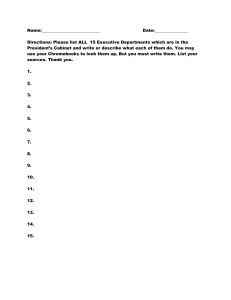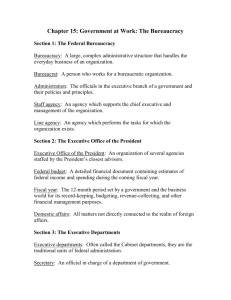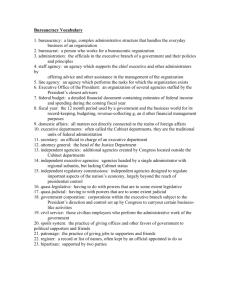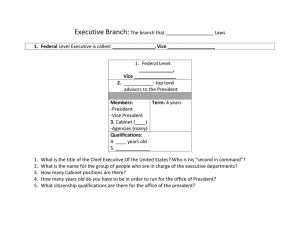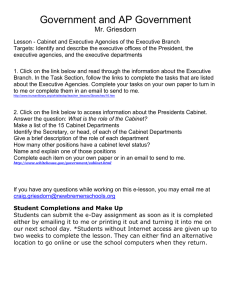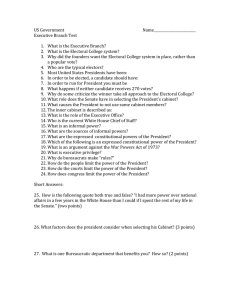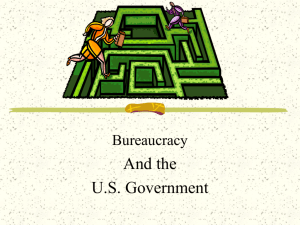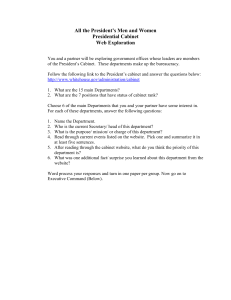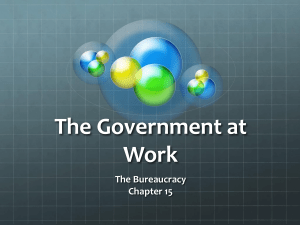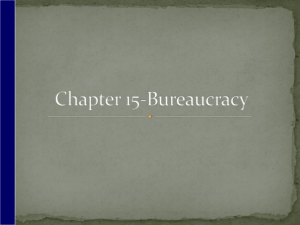Pol 102 online quiz 8
advertisement
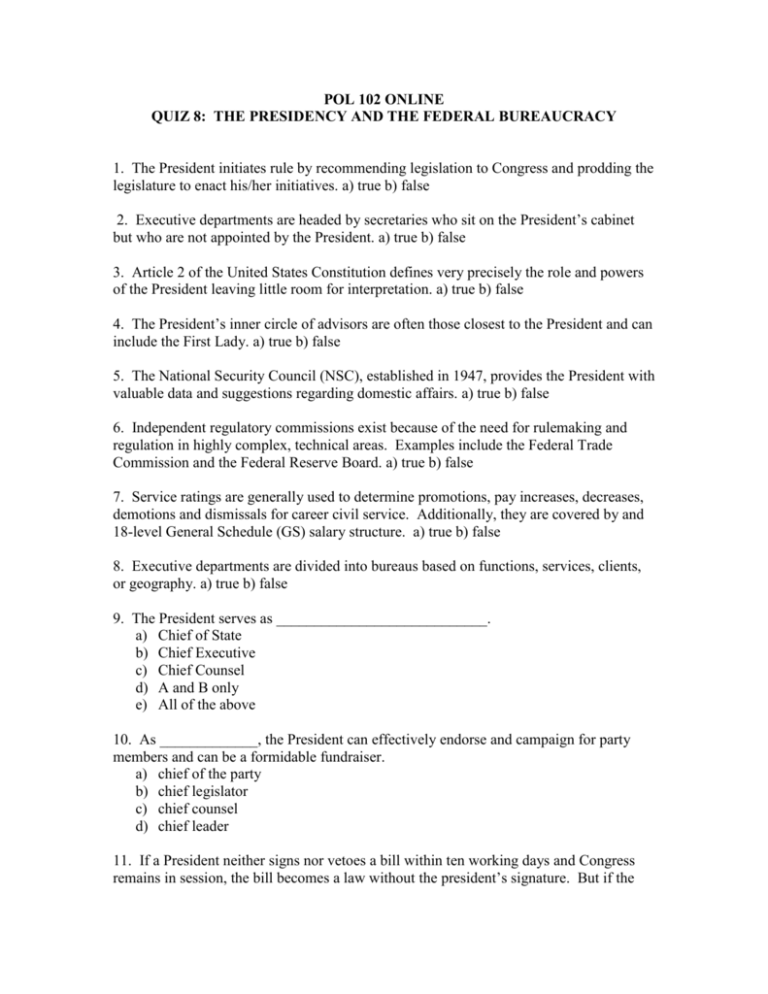
POL 102 ONLINE QUIZ 8: THE PRESIDENCY AND THE FEDERAL BUREAUCRACY 1. The President initiates rule by recommending legislation to Congress and prodding the legislature to enact his/her initiatives. a) true b) false 2. Executive departments are headed by secretaries who sit on the President’s cabinet but who are not appointed by the President. a) true b) false 3. Article 2 of the United States Constitution defines very precisely the role and powers of the President leaving little room for interpretation. a) true b) false 4. The President’s inner circle of advisors are often those closest to the President and can include the First Lady. a) true b) false 5. The National Security Council (NSC), established in 1947, provides the President with valuable data and suggestions regarding domestic affairs. a) true b) false 6. Independent regulatory commissions exist because of the need for rulemaking and regulation in highly complex, technical areas. Examples include the Federal Trade Commission and the Federal Reserve Board. a) true b) false 7. Service ratings are generally used to determine promotions, pay increases, decreases, demotions and dismissals for career civil service. Additionally, they are covered by and 18-level General Schedule (GS) salary structure. a) true b) false 8. Executive departments are divided into bureaus based on functions, services, clients, or geography. a) true b) false 9. The President serves as ____________________________. a) Chief of State b) Chief Executive c) Chief Counsel d) A and B only e) All of the above 10. As _____________, the President can effectively endorse and campaign for party members and can be a formidable fundraiser. a) chief of the party b) chief legislator c) chief counsel d) chief leader 11. If a President neither signs nor vetoes a bill within ten working days and Congress remains in session, the bill becomes a law without the president’s signature. But if the President neither signs nor vetoes the bill within ten days and Congress adjourns, the bill is killed. This is known as the ______________. a) pocket veto b) override c) dropping a bill d) riders 12. The _______________ limits Presidents to two terms in office. a) filibuster b) twenty-second amendment c) impeachment process d) legislative initiative 13. In extreme circumstances, Article 2, Section 4 of the United States Constitution provides that the President can be impeached by __________________ vote in the United States House and convicted and removed from office by a ___________ vote in the United States Senate. a) majority, majority b) 2/3, 2/3 c) majority, 2/3 d) 2/3, majority 14. Government corporations administer economic enterprises for the government. They appear to be part business and part government agency. An example is _____________________. a) Amtrak b) Macys c) Department of Energy d) Executive cabinet 15. Independent agencies report to the President in much the same way as the cabinet departments do. Technically, however, these agencies do not enjoy cabinet status. An example is the ________________________. a) National Aeronautics and Space Administration b) Department of Homeland Security c) Inner sanctum d) Quasi-legislative
